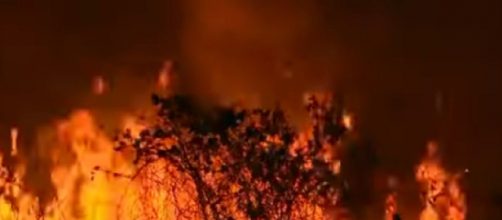Wildfires have come center stage. A new U.N. report paints a grim picture. It says the frequency of extreme wildfires could increase. Scientists have defined "extreme fires" as extraordinary conflagrations that occur roughly once a hundred years.
The increase could be around 50 percent by the end of this century. The report mentions the increased risk in places like the Arctic and other regions that have not experienced fires. Researchers attribute this to two factors. One is the rise in temperatures and the other to changes in land utilization.
The BBC says the new study highlights the need for a radical reallocation of financial resources. The policy should be directed to the prevention of fires rather than fighting them. The scientists from the U.N. Environment Programme (UNEP) have made a relevant observation. They say large fires that burn for a long time are already becoming hotter. Moreover, the duration of fires has also increased. This is in those places where wildfires are common. However, the picture is changing because there is a shift to newer regions.
Incidents of wildfires will increase in some places
The study reveals wildfires will reveal an upward trend over a period of time. These could happen as the usage of land changes and the population increases.
This would, in turn, affect Climate change because of the rise in carbon emissions in the atmosphere from the extra burning. The BBC adds that the change in the frequency of wildfires will depend on local factors.
The Arctic is an example. It would experience more fires because of climate change in the region. Africa is at the other extreme. At present, the majority of wildfires occur here. However, there will be fewer fires because the people are clearing the forests and converting them to farmland.
Governments should focus on the prevention of wildfires
The study focuses on different aspects of wildfires. A peat fire in the Arctic spreads slowly and cannot be a raging inferno. The fact remains that it is unusual and can cover large areas and damage the surroundings.
The BBC explains that the concept of an extreme fire will change once the location shifts to California. The governments have to modify their policy of spending on large fires. There is hardly any priority assigned to the planning and prevention of fires at present. Firefighting takes over most of the available budget.
Wildfires could increase by the end of the century
According to Sky News, the UNEP report suggests fires should be in the same category as other humanitarian disasters like earthquakes and floods. Experts say there could be an upward trend in wildfires by the end of the century. The situation has deteriorated, and unaffected regions are at risk of wildfires. Governments must shift their focus.
They have to concentrate on prevention and preparedness rather than on reaction and response.
UNEP official says: "At the moment, we react to wildfires when it's almost too late." Fires are regular features in South and Central America, central and southern Africa, Australia, and Southeast Asia. The tropical forests in Indonesia and the southern Amazon might have to tackle increased burning in case greenhouse gas emissions continue. The report admits wildfires and climate change are mutually exacerbating.


